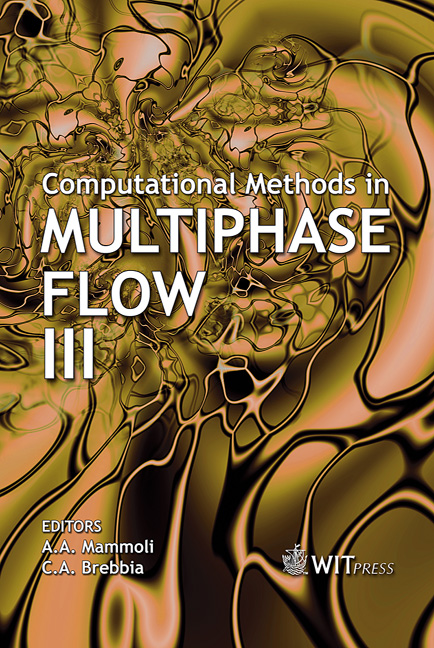A Coupled Interface-tracking/ Interface-capturing Technique For Free-surface Flows
Price
Free (open access)
Transaction
Volume
50
Pages
9
Published
2005
Size
1,013 kb
Paper DOI
10.2495/MPF050321
Copyright
WIT Press
Author(s)
M. Watts, S. Aliabadi & S. Tu
Abstract
In this paper we will present a new computational approach to simulate free-surface flow problems efficiently. The finite element solution strategy is based on a combination approach derived from fixed-mesh and moving-mesh techniques. Here, the free-surface flow simulations are based on the Navier-Stokes equations written for two incompressible fluids where the impact of one fluid on the other one is extremely small. An interface function with two distinct values is used to locate the position of the free-surface in regions near the floating object, while mesh-moving is used to move the free-surface in regions where wave breaking is not expected. The stabilized finite element formulations are written and integrated in an arbitrary Lagrangian-Eulerian domain. In the mesh-moving scheme, we assume that the computational domain is made of elastic materials. The linear elasticity equations are solved to obtain the displacements for each computational node. The numerical example includes a 3D simulation of flow past a sphere with a Reynolds number of 5000 and a Froude number of 0.5. Keywords: finite element method, parallel simulation, free-surface flows, interface-tracking, and interface-capturing. 1 Introduction The numerical simulations of free-surface flows require the coupling between the equations governing the dynamics of the fluid and the free-surface. Generally, there are two distinct approaches in the numerical simulation of free-surface flows. Depending on the physical characteristics of the problem, either \“interface-tracking” or \“interface-capturing” techniques are used. In the
Keywords
finite element method, parallel simulation, free-surface flows, interface-tracking, and interface-capturing.





